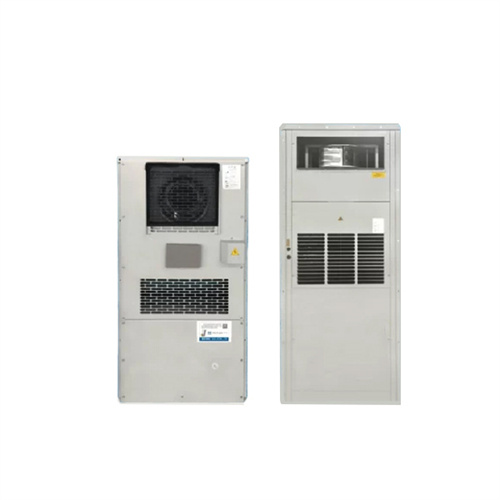Residual value rate of energy storage system

Energy Storage System Value Analysis and Value Recovery
To this end, first sort out the functional positioning and application value of energy storage on the power system; focus on the benefit of energy storage in the energy market, auxiliary service

Beyond cost reduction: improving the value of energy storage in
The whole-system benefit (WSB) given in €/year and the marginal WSB given in €/kW or €/kWh are two inspiring concepts how to attach a system-value to the energy storage

Understanding the Energy Potential of Lithium‐Ion Batteries:
The precise estimation of the remaining energy, the so-called State of Energy (SoE), is crucial in all sectors of electrified transportation, e. g., vehicles, trains, and ships. 1-3

Levelized Cost of Electricity and Internal Rate of Return for
And residual value on the far right, that enters into the question of what is a PV system and storage system worth at the end of its lifetime? PPA rate x the energy yield x the system

Energy Storage System Investment Decision Based on Internal Rate
2 Energy Storage System Net Cash Flow Model 2.1 Energy Storage System Cash Inflow Model The cash inflow sources of the user-side energy storage system include the backup electricity

Battery Storage: Australia''s current climate
They are also investigating the development of a 500MW, four-hour duration, battery energy storage system (BESS) adjacent to their Mt Piper power station in NSW. This project is currently in the assessment phase.

Life-Cycle Economic Evaluation of Batteries for Electeochemical Energy
They have made in-depth studies on the application of energy storage technology in various links of power system generation, transmission, distribution and use [6][7][8][9] [10]

Electricity storage valuation framework: Assessing system value
Phase 3: Analyse the system value of electricity storage vs. other flexibility options 26 Phase 4: Simulate storage operation and stacking of revenues 28 Phase 5: Assess the viability of

Rapid residual value evaluation and clustering of retired lithium
However, existing residual value assessment techniques face challenges in balancing assessment accuracy and efficiency. To address this issue, a rapid residual value evaluation

Economic Analysis of the Investments in Battery
Sources such as solar and wind energy are intermittent, and this is seen as a barrier to their wide utilization. The increasing grid integration of intermittent renewable energy sources generation significantly changes the

Economic Analysis of the Investments in Battery Energy
The paper makes evident the growing interest of batteries as energy storage systems to improve techno-economic viability of renewable energy systems; provides a comprehensive overview of key

The Economics of Variable Renewable Energy and Electricity Storage
We discuss the market dynamics of increasing VRE penetration and its integration in the electricity system. We describe the merit-order effect (the decline of wholesale electricity

Rapid residual value evaluation and clustering of retired lithium
Since RBs still have 70–80 % of their rated capacity, they can be employed in different scenarios through residual value evaluation and restructuring [[4], [5], [6]], such as low-speed two

6 FAQs about [Residual value rate of energy storage system]
How is electricity storage value assessed?
Values are assessed by comparing the cost of operating the power system with and without electricity storage. The framework also describes a method to identify electricity storage projects in which the value of integrating electricity storage exceeds the cost to the power system.
Will the capital cost of residential energy storage systems fall?
A continuous fall in the capital cost of building grid-scale ESSs is also projected (Figure 2.5). Benchmark capital costs for a fully installed residential energy storage system. The capital cost of residential ESS projects are similarly foreseen to drop over the next few years (Figure 2.6).
What are energy storage systems?
By using energy storage systems (ESSs) [14, 15], the power system can shift part of the peak load to low power consumption period, thus utilizing surplus power during low power consumption period, improving the load rate of the power grid, in order to achieve the purpose of energy saving [9, 16, 17].
Are Lem-Gess and existing energy storage systems used in primary response?
This paper presents an economic analysis of the LEM-GESS and existing energy storage systems used in primary response. A 10 MWh storage capacity is analysed for all systems. The levelised cost of storage (LCOS) method has been used to evaluate the cost of stored electrical energy.
How to evaluate energy storage technology?
At present, existing studies mainly focus on the technical and economic aspects of energy storage technology to establish evaluation indicators, and use descriptive method , analytic hierarchy process (AHP) or fuzzy Delphi method [26, 27] or rough set method , or Stackelberg Game Method to evaluate energy storage technology.
How much energy does a large-scale energy storage system need?
According to GB/T 36,276–2018 and GB/T 36,549–2018, the batteries used for large-scale energy storage needs a retention rate of energy more than 60%. The total installed capacity, \ (C_ {p}\), is determined to 35 MW h. The ESS is set to operate for 15 years.
Related Contents
- Energy Storage System Value Chain
- Energy storage cabinet conversion rate
- Value of energy storage liquid cooling system
- Energy storage system has high failure rate
- Ar Energy Storage System Investment Value
- Application of high rate energy storage system
- 60kw photovoltaic energy storage
- Battery protection schematic diagram of energy storage cabinet
- Power plant energy storage control cabinet
- Solar energy storage cabinet lithium battery franchise
- Inverter and energy storage battery system
- Assembled energy storage box foundation